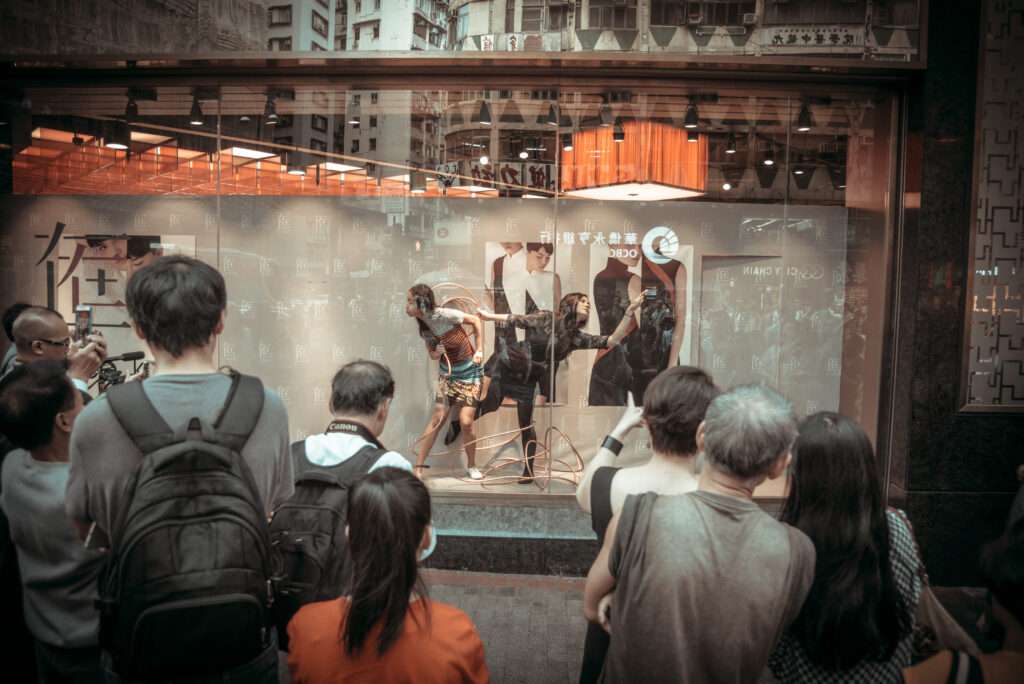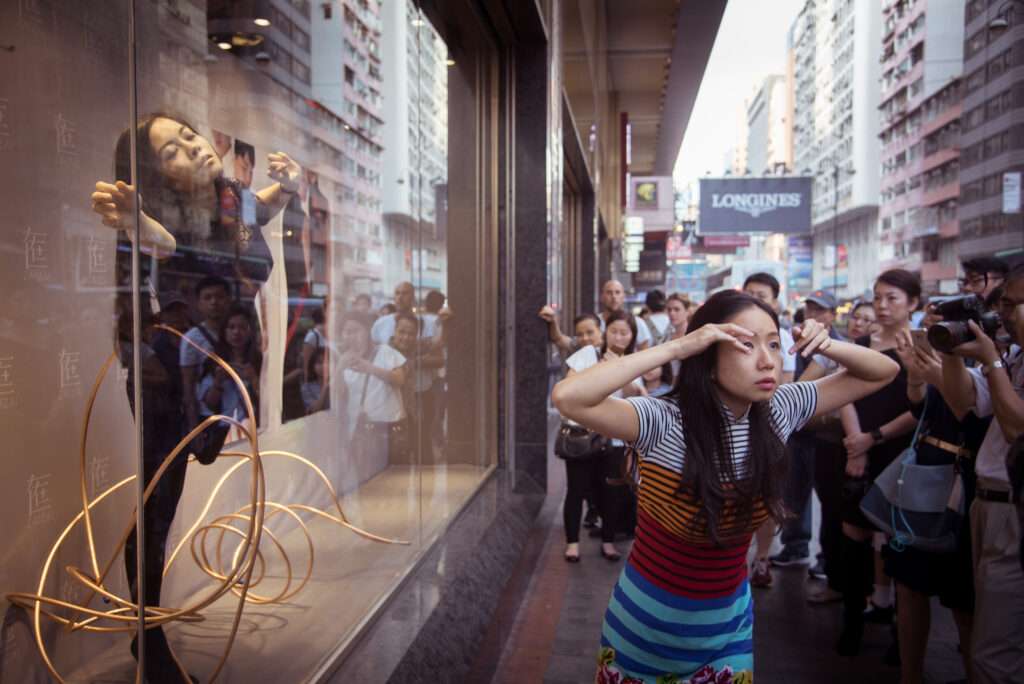Komorebi
May Yeung
Medium: Chinese checkers, ceramics, brass, and wood
Size: 36 ‘ X 5’
Yue Hwa Emporium, HK, 2016
Inspired by the fleur-de-lis (flower of the lily), a prominent French symbol that signifies perfection, light, and life, the artist created Komorebi (which means “lights shining through the leaves”) – ceramic vases modelled after the popular flowers of France, China, and Hong Kong. For the artist, every flower is a soul blossoming in this bustling world. The gradual variegation of the vases represents the cycle of life and death, be it a person or a nation.
From the artist’s perspective, life and death are one, as the river and sea are one. Influenced by the cantilevered architecture of Frank Lloyd Wright’s Fallingwater, she used the layout of Chinese checkers to create the effect of waterfalls. For May, the game of life is similar to Chinese checkers: you can build on yesterday’s success or put its failures behind and turn challenges into opportunities.
The artist’s choice of Chinese checkers stems from her love for the game as a child. By using them as one of the mediums for Komorebi, she recreated her childhood memories and looked at the world through the eyes of a child again. When the darkness sets in, the true beauty of the stained glass is revealed with the light shining through. In the digital age, it is crucial to maintain traditions by making deposits into the memory banks of children.
As Khalil Gibran once said, “Yesterday is but today’s memory and tomorrow is today’s dream.” As a sign of respect and promotion of Chinese traditions, the artist incorporated wood from Sze Cheung Wood Ltd., the only Hong Kong wood shop with 100+ years of history, into Komorebi. From the artist’s point of view, old wood is the best option, allowing one to see growth.
Komorebi is a marriage of Chinese and French cultures to celebrate the 60th anniversary of Sino-French diplomatic relations and the 20th anniversary of Hong Kong’s return to China. The growth of a great city requires reflection, as well as innovation, to appreciate and further promote local traditions. Through the spirit of Komorebi, may light drive out darkness and may love drive out hatred.
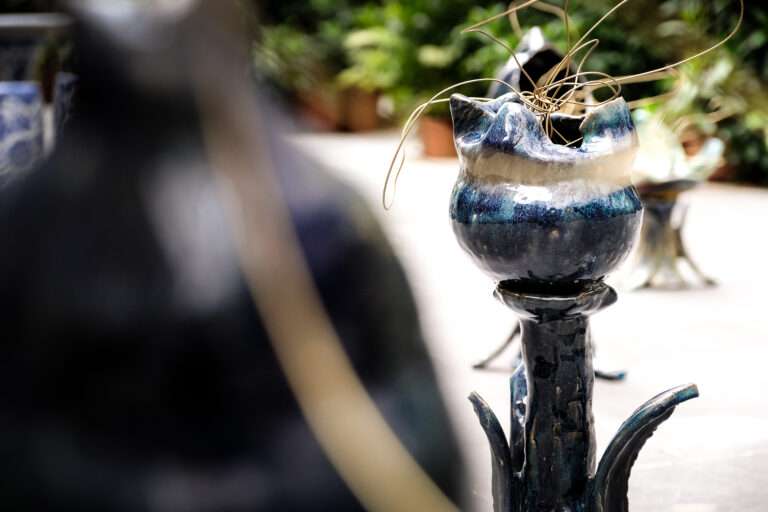
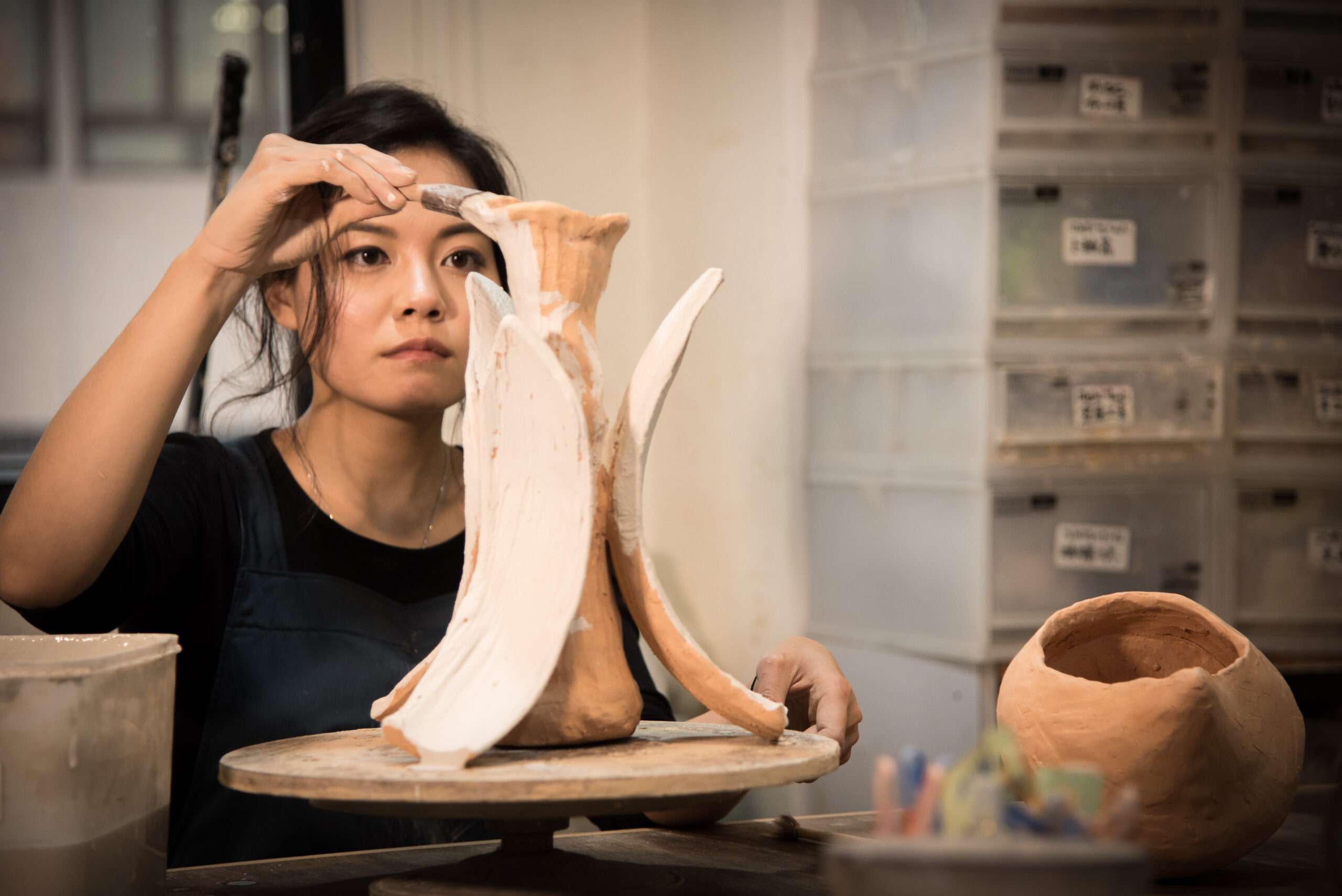
Mangata
May Yeung
Medium: Dim sum steamers, copper
Size: 12’ X 6’
Yue Hwa Emporium, HK, 2016
Fascinated by the beauty of the moon during her hike at Vatnajökull, Europe’s second largest glacier and known for its translucent ice caves, May created Mangata (road-like reflection of the moon on the water). At a time of social distress in Hong Kong, the artist believes in the importance of aiming for the moon and shooting for the stars. With its physical resemblance to a moon and its embodiment of Hong Kong’s “yum cha” culture, dim sum steamers were the perfect medium to create Mangata.
For the artist, a culture’s food is holy because it is about sharing, honesty, and most importantly, identity. The sharing of food brings people closer together by creating an intimate experience. As people instinctively share their thoughts at the dining table, they understand and reconcile with each other’s differences and have respect for each other. Respect for others guides our manners, which reflect upon our individual characters that are influenced by our cultural legacy.
Whether it is shumai (Chinese dumpling) or char siu bao (Chinese BBQ pork buns), food has a way of transporting us back to past days. It allows us to reflect upon Hong Kong’s past history, origin, and culture. To establish roots at a place, we have to smile through trouble and gather strength from distress together. Specifically, May used dim sum steamers from Tuk Chong Sum Kee Bamboo Steamer Co., the only store left in Hong Kong that hand-weaves bamboo steamers. As we view ordinary objects as blessings, we are able to find traditional food for our soul and turn the modernity of today into the traditions of tomorrow. By transforming a day-to-day object into artwork, the artist believes that it is the first step in keeping Hong Kong traditions alive.
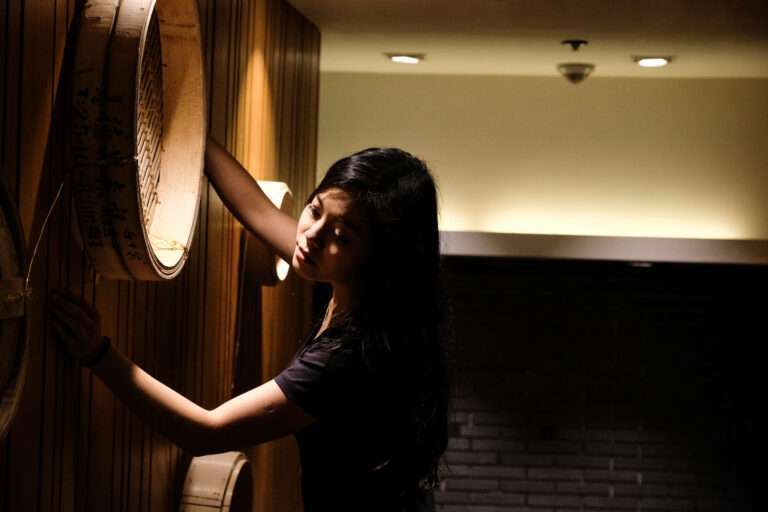
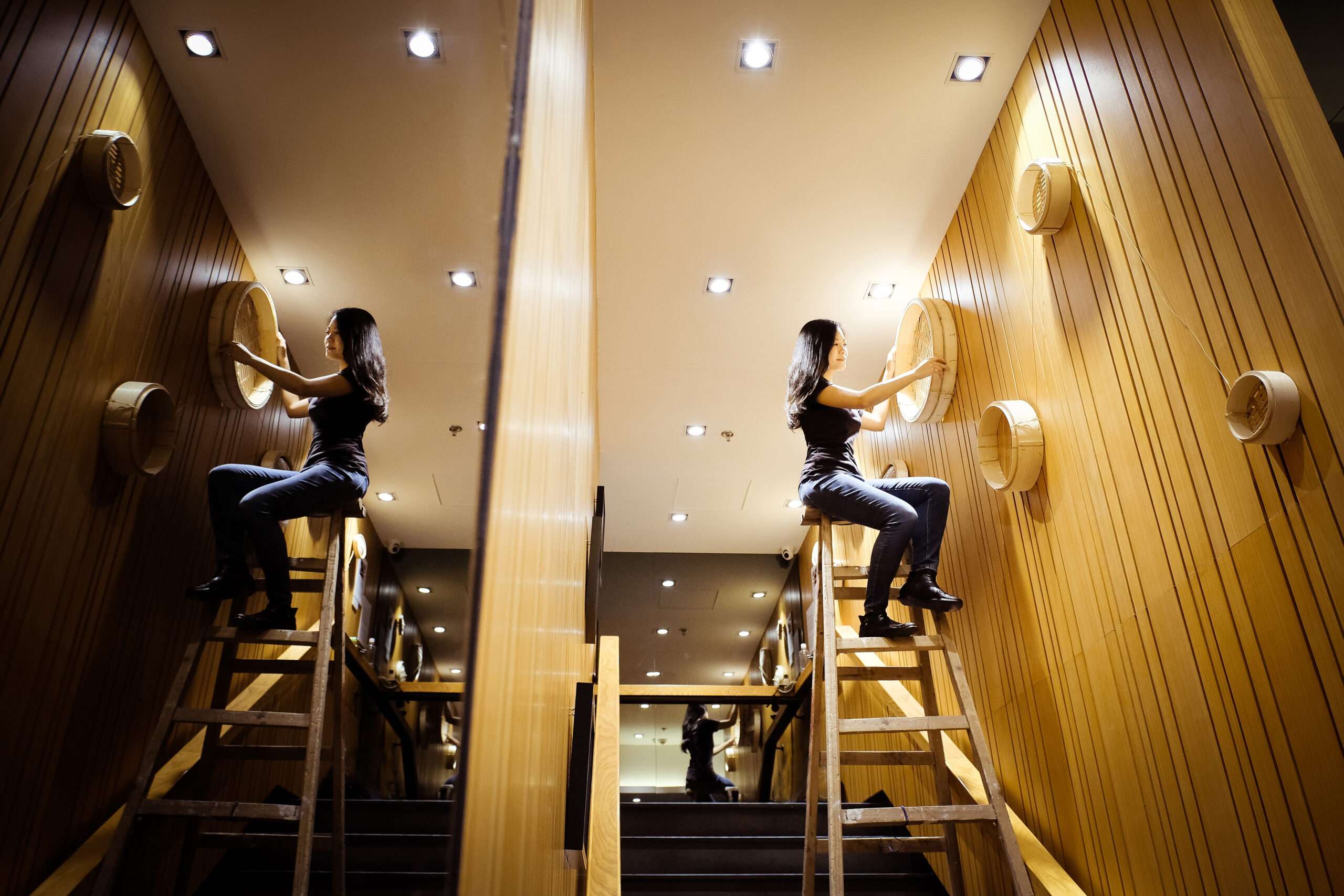
Tsubame
Yue Hwa Emporium, HK 2017
Fascinated by the beauty of the moon during her hike at Vatnajökull, Europe’s second largest glacier and known for its translucent ice caves, May created Mangata (road-like reflection of the moon on the water). At a time of social distress in Hong Kong, the artist believes in the importance of aiming for the moon and shooting for the stars. With its physical resemblance to a moon and its embodiment of Hong Kong’s “yum cha” culture, dim sum steamers were the perfect medium to create Mangata.
For the artist, a culture’s food is holy because it is about sharing, honesty, and most importantly, identity. The sharing of food brings people closer together by creating an intimate experience. As people instinctively share their thoughts at the dining table, they understand and reconcile with each other’s differences and have respect for each other. Respect for others guides our manners, which reflect upon our individual characters that are influenced by our cultural legacy.
Whether it is shumai (Chinese dumpling) or char siu bao (Chinese BBQ pork buns), food has a way of transporting us back to past days. It allows us to reflect upon Hong Kong’s past history, origin, and culture. To establish roots at a place, we have to smile through trouble and gather strength from distress together. Specifically, May used dim sum steamers from Tuk Chong Sum Kee Bamboo Steamer Co., the only store left in Hong Kong that hand-weaves bamboo steamers. As we view ordinary objects as blessings, we are able to find traditional food for our soul and turn the modernity of today into the traditions of tomorrow. By transforming a day-to-day object into artwork, the artist believes that it is the first step in keeping Hong Kong traditions alive.
